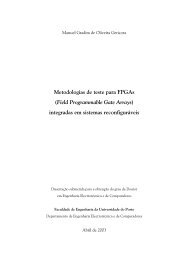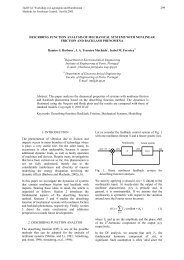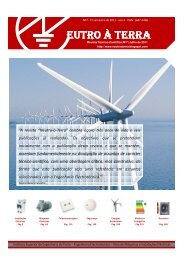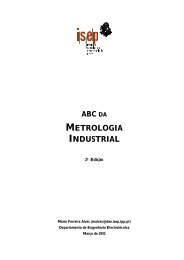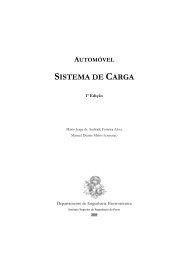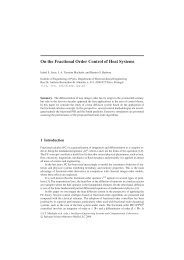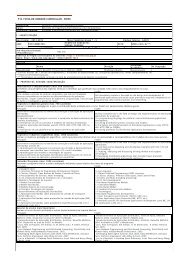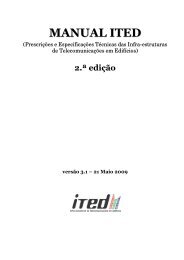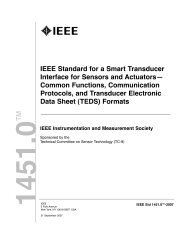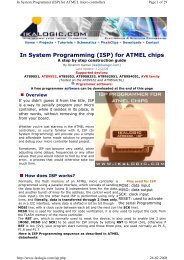AUTOMOTIVE ELECTRICAL CIRCUITS AND WIRING
AUTOMOTIVE ELECTRICAL CIRCUITS AND WIRING
AUTOMOTIVE ELECTRICAL CIRCUITS AND WIRING
Create successful ePaper yourself
Turn your PDF publications into a flip-book with our unique Google optimized e-Paper software.
A common problem arises when a CARBON TRACE (small line of carbonlike<br />
substance that conducts electricity) forms on the inside of the distributor cap or outer<br />
edge of the rotor. The carbon trace will short coil voltage to ground or to a wrong<br />
terminal lug in the distributor cap. A carbon trace will cause the spark plugs to either<br />
fire poorly or not at all.<br />
Using a droplight, check the inside of the distributor cap for cracks and carbon trace.<br />
Carbon trace is black which makes it hard to see on a black-colored distributor cap. If<br />
carbon trace or a crack is found, replace the distributor cap or rotor.<br />
CONTACT POINT DISTRIBUTOR SERVICE.- In a contact point distributor,<br />
there are two areas of concern- the contact points and the condenser.<br />
Bad contact points cause a variety of engine performance problems. These problems<br />
include high-speed missing, no-start problem, and many other ignition troubles.<br />
Visually inspect the surfaces of the contact points to determine their condition. Points<br />
with burned and pitted contacts or with a worn rubbing block must be replaced.<br />
However, if the points look good, point resistance should be measured. Turn the<br />
engine over until the points are closed and then use an ohmmeter to connect the meter<br />
to the primary point lead and to ground. If resistance reading is too high, the points are<br />
burned and must be replaced.<br />
A faulty condenser may leak (allow some dc current to flow to ground), be shorted<br />
(direct electrical connection to ground), or be opened (broken lead wire to the<br />
condenser foils). If the condenser is leaking or open, it will cause point arcing and<br />
burning. If the condenser is shorted, primary current will flow to ground and the<br />
engine will NOT start. To test a condenser using an ohmmeter, connect the meter to<br />
the condenser and to ground. The meter should register slightly and then return to<br />
infinity (maximum resistance). Any continuous reading other than infinity indicates<br />
that the condenser is leaking and must be replaced.<br />
Installing contact points is a relatively simple procedure but must be done with<br />
precision and care in order to achieve good engine performance and economy. Make<br />
sure the points are clean and free of any foreign material.<br />
Proper alignment of the contact points is extremely important (fig. 2-52). If the faces<br />
of the contact points do not touch each other fully, heat generated by the primary<br />
current cannot be dissipated and rapid burning takes place. The contacts are aligned by<br />
bending the stationary contact bracket only. NEVER BEND THE MOVABLE<br />
CONTACT ARM. Ensure the contact arm-rubbing block rests flush against the<br />
distributor cam. A small amount of an approved lubricate should be placed on the<br />
distributor cam to reduce friction between the cam and rubbing block. Once the points<br />
are installed, they can be adjusted using either a feeler gauge or dwell meter.<br />
To use a feeler gauge to set the contact points, turn the engine over until the points are<br />
FULLY OPEN. The rubbing block should be on top of a distributor cam lobe. With<br />
the points open, slide the specified thickness feeler gauge between them. Adjust the<br />
points so that there is a slight drag on the blade of the feeler gauge. Depending upon<br />
<strong>AUTOMOTIVE</strong> <strong>ELECTRICAL</strong> <strong>CIRCUITS</strong> <strong>AND</strong> <strong>WIRING</strong> 69/ 101



